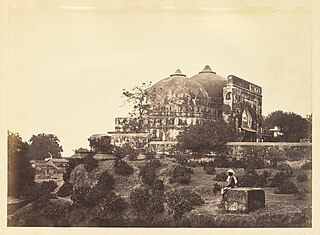
Babri Masjid was a mosque in Ayodhya, India, at a site believed by many Hindus to be the birthplace of Hindu deity Rama. It has been a focus of dispute between the Hindu and Muslim communities since the 18th century. According to the mosque's inscriptions, it was built in 1528–29 by general Mir Baqi, on the orders of the Mughal emperor Babur. The mosque was attacked and demolished by a Hindu nationalist mob in 1992, which ignited communal violence across the Indian subcontinent.
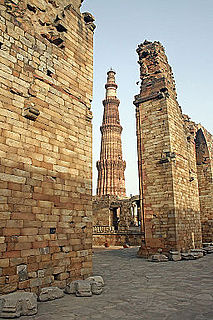
The Qutb complex are monuments and buildings from the Delhi Sultanate at Mehrauli in Delhi in India. Construction of the Qutub Minar "victory tower" in the complex, named after the religious figure Sufi Saint Khwaja Qutbuddin Bakhtiar Kaki, was begun by Qutb-ud-din Aibak, who later became the first Sultan of Delhi of the Mamluk dynasty. It was continued by his successor Iltutmish, and finally completed much later by Firoz Shah Tughlaq, a Sultan of Delhi from the Tughlaq dynasty (1320-1412) in 1368 AD. The Qubbat-ul-Islam Mosque, later corrupted into Quwwat-ul Islam, stands next to the Qutb Minar.
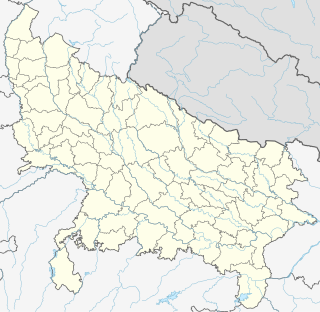
Ram Janmabhoomi is the site that is believed to be the birthplace of Rama, the seventh avatar of the Hindu deity Vishnu. The Ramayana states that the location of Rama's birthplace is on the banks of the Sarayu river in a city called "Ayodhya".

The All India Majlis-e-Ittehad-ul-Muslimeen is an Indian regional political party claiming to promote the social, economical, and educational development and effective representation of Muslims in India, based in the Indian state of Telangana, with its head office in the Aghapura, Hyderabad, which has its roots in the Majlis-e-Ittehadul Muslimeen.

The Charminar constructed in 1591, is a monument and mosque located in Hyderabad, Telangana, India. The landmark has become known globally as a symbol of Hyderabad and is listed among the most recognized structures in India. It has also been officially incorporated as the Emblem of Telangana for the state of Telangana. The Charminar's long history includes the existence of a mosque on its top floor for more than 400 years. While both historically and religiously significant, it is also known for its popular and busy local markets surrounding the structure, and has become one of the most frequented tourist attractions in Hyderabad. Charminar is also a site of numerous festival celebrations, such as Eid-ul-adha and Eid al-Fitr.
The Archaeology of Ayodhya concerns the excavations and findings in the Indian city of Ayodhya in the state of Uttar Pradesh, much of which surrounds the Babri Mosque location.
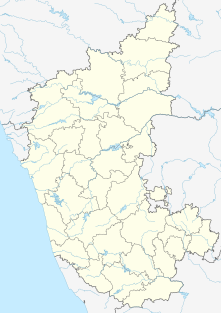
Chitapur or Chittapur is a Town and Taluk in Gulbarga District in the state of Karnataka, India. It is also the headquarters of the Chittapur taluk. It is known for polished stones and toor dal, also recently it became known as Vikram V Itagi fiancee's hometown.

The Ayodhya dispute is a political, historical, and socio-religious debate in India, centred on a plot of land in the city of Ayodhya, Uttar Pradesh. The issues revolve around the control of a site traditionally regarded among Hindus to be the birthplace of their deity Rama, the history and location of the Babri Masjid at the site, and whether a previous Hindu temple was demolished or modified to create a mosque, the Babri Masjid.

The Old City of Hyderabad is a walled city of Hyderabad, Telangana, India, located on the banks of the Musi River built by Qutb Shahi sultan Muhammed Quli Qutb Shah in 1591 AD. There used to be a wall surrounding the Old City, most of which is destroyed. Mubariz Khan, the Mughal governor of Deccan Subah, had fortified the city in 1712 and was completed by Nizam of Hyderabad.
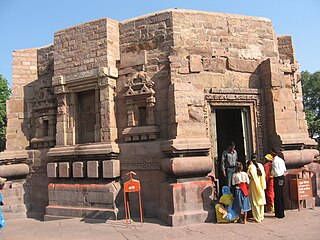
The Mundeshwari Devi Temple is located at paunra pahad, Ramgarh village in Kaimur district in the state of Bihar, India on the Mundeshwari Hills. It is an ancient temple dedicated to the worship of Lord Shiva and Shakti and is considered one of the oldest Hindu temples in India. It is also considered as the oldest functional Hindu temple of India. The information plaque erected by the Archaeological Survey of India (ASI) at the site indicates the dating of the temple to 625 CE. Hindu inscriptions dated 635 CE were found in the temple. The temple is a protected monument under ASI since 1915. Local folklores say that Chanda and Munda who were full brothers and chieftains of demon Mahishasura were rulers of the area. Mahishasura fought decisive battle with Gooddess Durga as mentioned in Durga Shaptshati. Munda made goddess Mundeshwari Bhawani temple while his younger brother Chanda made Chandeshwari temple at top of Madurana hill near Chainpur.

Culture of Hyderabad also known as Hyderabadi Tehzeeb or Dakhini Tehzeeb, is the traditional cultural lifestyle of the Hyderabadi Muslims, and characterizes distinct linguistic and cultural traditions of North and South India, which meet and mingle in the city and erstwhile kingdom. This blending was the result of the geographic location of the region and the variety of historical dynasties that ruled the city across different periods—its inception by the Qutub Shahi dynasty in 1591 AD, the occupation by the Mughal Empire and its decline, and the patronage under the Asaf Jahi dynasty.

The Kalleshvara temple is located in the town of Ambali in Bellary district of Karnataka state, India. According to an Old Kannada inscription placed in the sabhamantapa, the temple was constructed during the reign of the Western Chalukya Empire King Vikramaditya VI. This temple is protected as a monument of national importance by the Archaeological Survey of India.
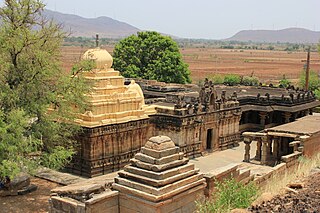
Kalleshvara temple is located in the town of Bagali near to Harpanahalli town in the Davangere district of Karnataka state, India.

Pancha Rathas is a monument complex at Mahabalipuram, on the Coromandel Coast of the Bay of Bengal, in the Kancheepuram district of the state of Tamil Nadu, India. Pancha Rathas is an example of monolithic Indian rock-cut architecture. The complex was carved during the reign of King Narasimhavarman I : the idea of realising monolithic buildings, an innovation in Indian architecture, is attributed to this ruler. The complex is under the auspices of the Archaeological Survey of India (ASI) and is part of the UNESCO World Heritage site inscribed by UNESCO as Group of Monuments at Mahabalipuram.
Telangana State Tourism Development Corporation (TSTDC) is a state government agency which promotes tourism in Telangana, a state in the Southern region of India. The retired Director General of Police Pervaram Ramulu is the appointed First chairman of Telangana State Tourism. Tourist attractions in Telangana include historical places, monuments, forts, water falls, forests and temples.
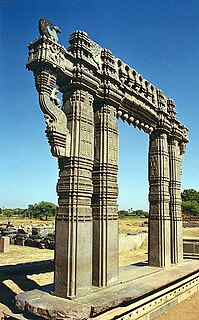
Kakatiya Kala Thoranam is a historical arch in the Warangal district, of the Indian state of Telangana. The Warangal Fort has four ornamental gates which originally formed the gates to the destroyed great Shiva temple which are known as Kakatiya Kala Thoranam or Warangal Gates. The architectural feature of these historical arches of the Warangal Fort has been adopted as the symbol of the Kakatiya Dynasty and has been officially incorporated as the Emblem of Telangana for the state of Telangana. These gates or arches in the Warangal Fort are said to have similarities with gateways of the Sanchi stupa; this fact has been endorsed by many.
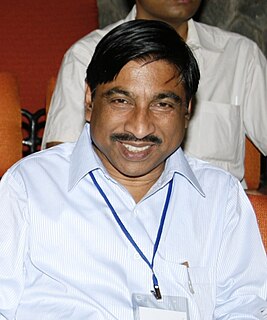
Karingamannu Kuzhiyil Muhammed is an Indian archaeologist. He was the Regional Director (North) of the Archaeological Survey of India (ASI), and also served as the Project Archaeological Director in the Aga Khan Trust for Culture from 2013 to 2016.

Jain Basadi complex in Halebidu, Hassan district consists of three Jain Basadis dedicated to the Jain Tirthankars Parshvanatha, Shantinatha and Adinatha. The complex is situated near Kedareshwara temple and Dwarasamudra lake. These temples were constructed in the 12th century during the reign of Hoysala Empire along with Kedareshwara temple and Hoysaleswara Temple have been proposed to be listed under UNESCO World Heritage Site.

A distinct Indo-Islamic architecture style with local contribution is reflected in the historical buildings of Hyderabad, making it the first and "Best Heritage City of India" as of March 2012. The city houses many famous historical sites constructed during Qutb Shahi and Asaf Jahi period, including various mosques and palaces.



















